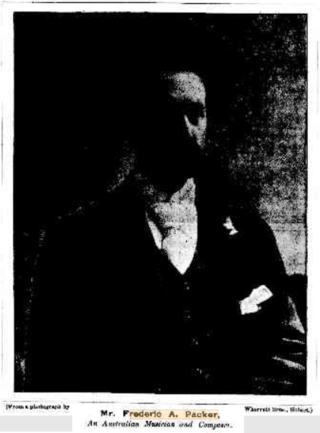
Hobart is the capital and most populous city of the island state of Tasmania, Australia. Located in Tasmania's south-east on the estuary of the River Derwent, it is the southernmost capital city in Australia. Despite containing nearly half of Tasmania's population, Hobart is the least-populated Australian state capital city, and second-smallest by population and area after Darwin if territories are taken into account. Its skyline is dominated by the 1,271-metre (4,170 ft) kunanyi / Mount Wellington, and its harbour forms the second-deepest natural port in the world, with much of the city's waterfront consisting of reclaimed land. The metropolitan area is often referred to as Greater Hobart, to differentiate it from the City of Hobart, one of the seven local government areas that cover the city. It has a mild maritime climate.

New Norfolk is a riverside town located on the River Derwent in southeastern Tasmania, Australia. Established in 1807, it is Tasmania’s fourth-oldest European settlement and ranks as the twelfth oldest in Australia. Initially founded by evacuees from Norfolk Island, New Norfolk has a population of 6,153 as of 2021 and serves as the main township of the Derwent Valley region. It lies 32 kilometres (20 mi) northwest of Hobart, along the Lyell Highway, and is encompassed within the Greater Hobart statistical area.

Hobart College is a government comprehensive senior secondary school located in Mount Nelson, a suburb of Hobart, Tasmania, Australia. Established in 1913 as Hobart High School, it was later renamed as Hobart Matriculation College in 1965, and subsequently renamed as Hobart College. The college caters for approximately 1,300 students in Years 11 and 12 and is administered by the Department for Education, Children and Young People.

A coffee palace was an often large and elaborate residential hotel that did not serve alcohol, most of which were built in Australia in the late 19th century.

Hamilton is an affluent riverside mixed-use suburb in the north-east of the City of Brisbane, Queensland, Australia. Hamilton is located along the north bank of the Brisbane River. In the 2021 census, Hamilton had a population of 8,922 people.

The Hotel Grand Chancellor Hobart is a twelve-storey hotel located on the waterfront of Hobart, Tasmania, Australia.
Charles Tiffin (1833–1873) was an English architect, who spent most of his career in Queensland, Australia where he held the post of Queensland Colonial Architect.

Joseph Boss Williams Woollnough was an Australian politician and Anglican church minister. He was a prominent figure in the Anglican church in Tasmania from his arrival to take up a senior church role in 1883, the member for Sorell in the Tasmanian House of Assembly from 1893 to 1903 and the owner of the historic former Model Prison at Port Arthur from 1889 until his death.

Franklin Square is a 1.6-acre (0.63-hectare) oak-lined public square located in the Hobart City Centre in Tasmania, Australia. It is named for Sir John Franklin, an Arctic explorer and former Lieutenant-Governor of Van Diemen's Land. The centrepiece of the park is a statue of Franklin, with an epitaph written by Alfred, Lord Tennyson. As the city's most central urban parkland and transportation hub, Franklin Square is frequently utilised for festive markets, public gatherings and as a place for public protest.

Henry Hunter (1832–1892) was a prominent architect and civil servant in Tasmania and Queensland, Australia. He is best known for his work on churches. During his life was also at various times a state magistrate of Tasmania, a member of the Tasmanian State Board of Education, the Hobart Board of Health, a Commissioner for the New Norfolk Insane Asylum and President of the Queensland Institute of Architects.

St Mary's Cathedral in Hobart, Tasmania, Australia, is the seat of the Roman Catholic Archbishop of Hobart, presently Julian Porteous.

Clayton Wesley Uniting Church, formerly Clayton Congregational Church, is a Uniting church, located at 280 Portrush Road, Beulah Park, Adelaide, South Australia, Australia. The current building with its tall spire was built was built in 1883, although an earlier building, behind the present church and now known as the Lecture Hall, was built in 1856. The church is located in a commanding position at the eastern end of The Parade, Norwood.

The Princess Theatre is a historic theatre in Launceston, Tasmania, Australia.

Frederick Augustus Gow Packer, generally referred to as F. A. Packer but also Frederick Gow Packer, was an Australian composer of Anglican spiritual and romantic music.
William Henry Simmonds was an English newspaperman whose varied career took him finally to Tasmania, Australia, where he was editor of the Hobart Mercury for 18 years.

The Odeon Theatre is a historic former cinema and current live entertainment venue in the city of Hobart, Tasmania, Australia.

The Avalon Theatre is a historic former Temperance Hall, theatre and cinema in Hobart, Tasmania, Australia.
William Cooper was a leading member of the Society of Friends in Sydney, Australia. He was a director of the Australian offshoot of Cadbury Ltd, the chocolate manufacturers.
James Rickard was an Australian Congregationalist minister, remembered as the founder of the Council of Churches in the state of Victoria, Australia.















